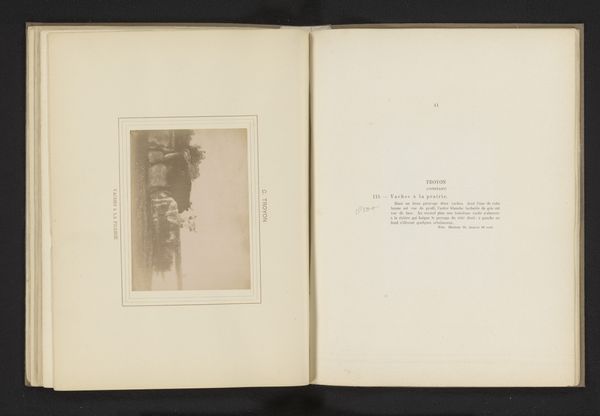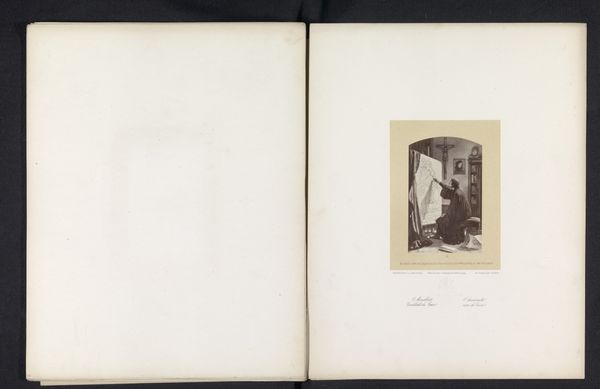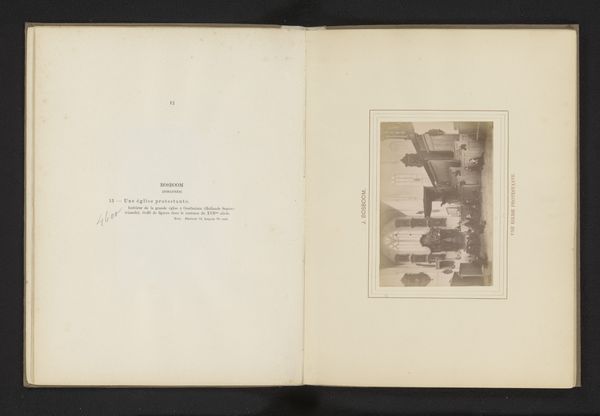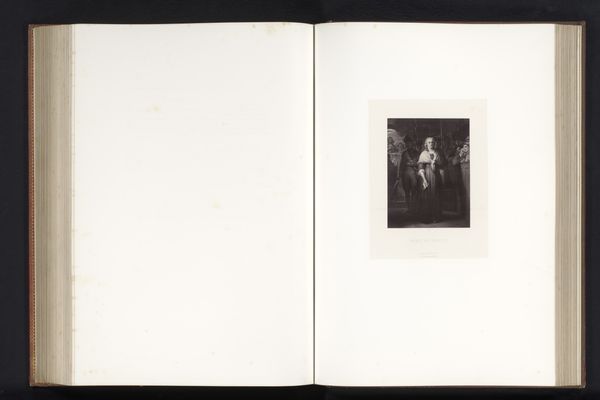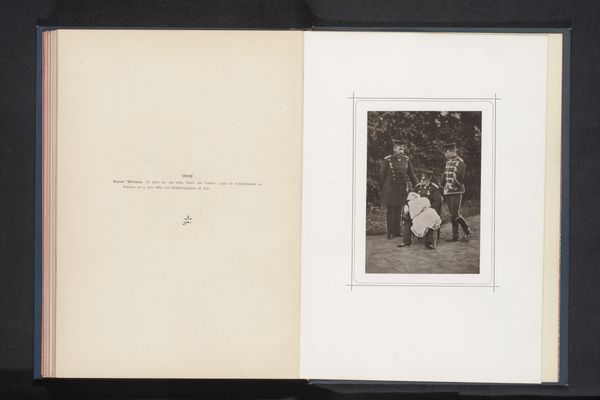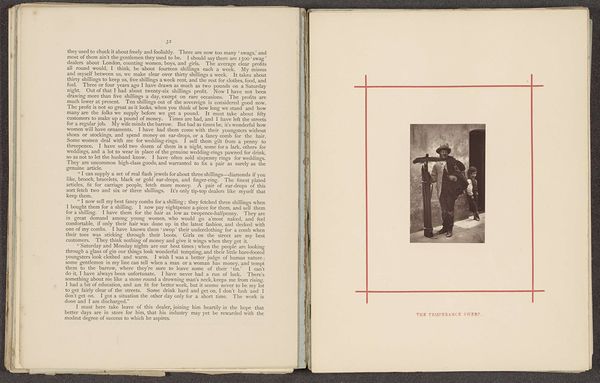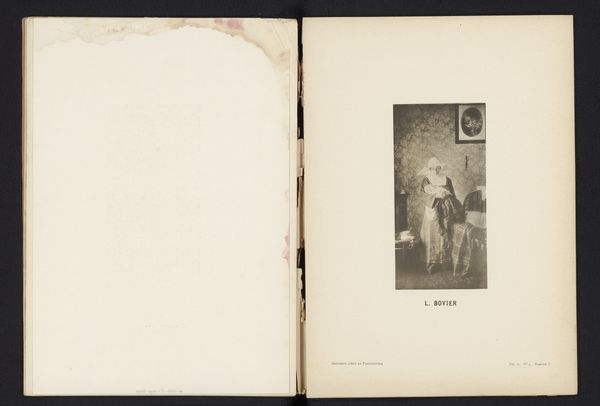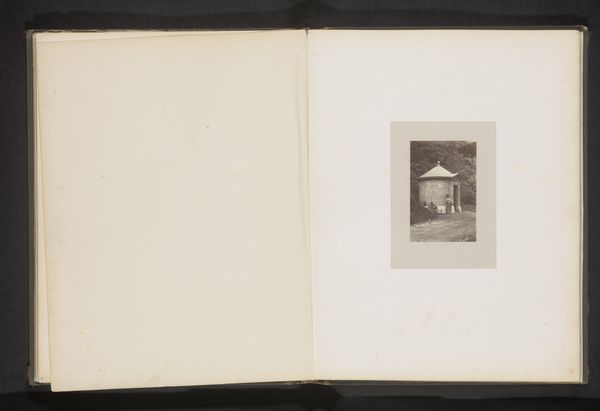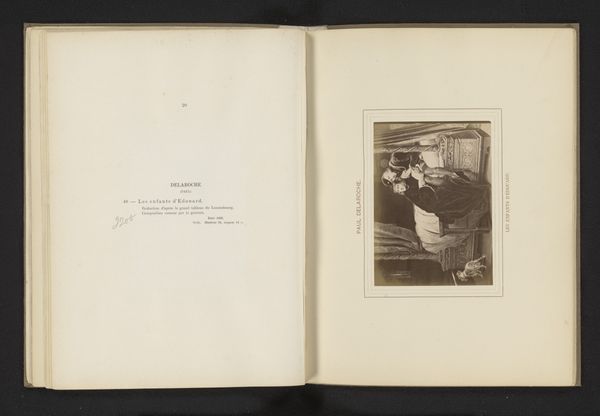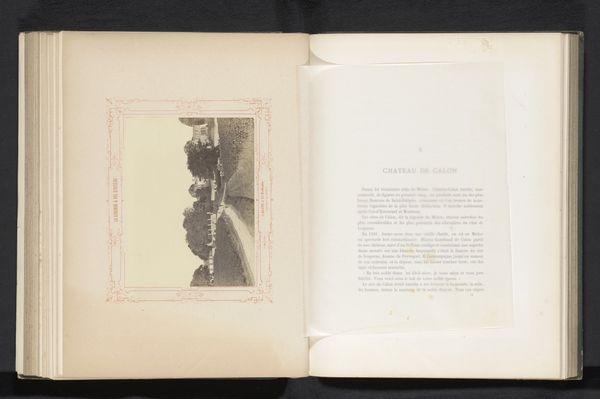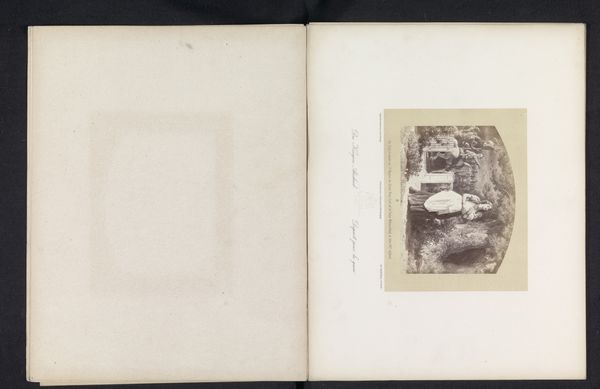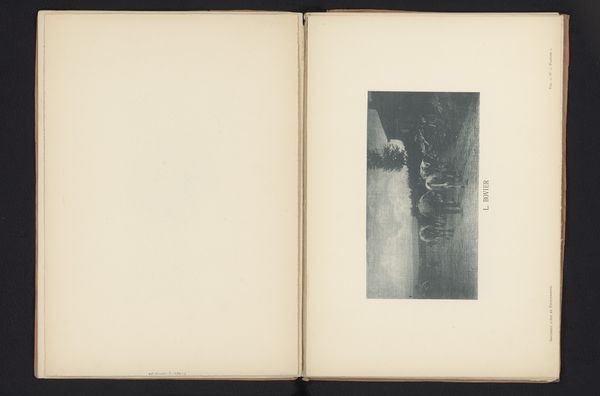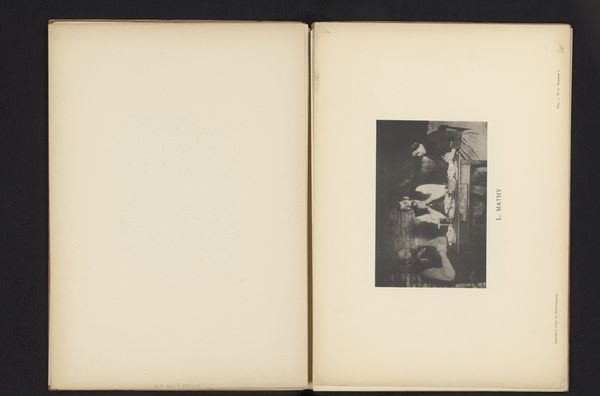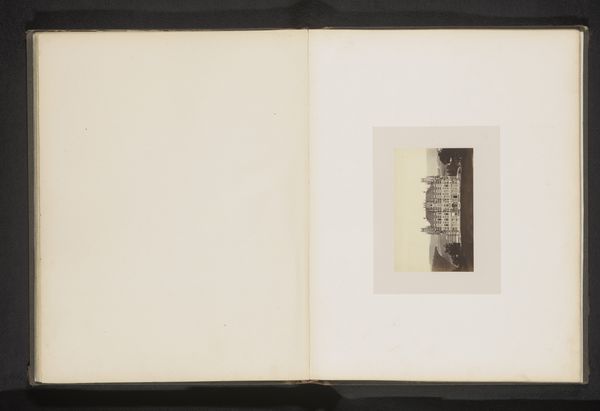
Fotoreproductie van een silhouet van Wilhelm I en zijn broer, spelend met speelgoed soldaten before 1897
0:00
0:00
print, paper
#
portrait
# print
#
figuration
#
paper
#
line
#
history-painting
Dimensions: height 98 mm, width 60 mm
Copyright: Rijks Museum: Open Domain
Editor: Here we have a print from before 1897, housed at the Rijksmuseum, titled "Fotoreproductie van een silhouet van Wilhelm I en zijn broer, spelend met speelgoed soldaten" - or a photoreproduction of a silhouette of Wilhelm I and his brother, playing with toy soldiers. The stark black and white of the print is quite striking. What can you tell me about it? Curator: This image, made through reproducible means, presents a fascinating tension. It’s a mass-produced print depicting a scene of aristocratic play, effectively democratizing an image of privilege. Consider the paper itself, likely made using industrial processes, and the ink, components of expanding trade networks. It turns what might have been a unique painting, accessible only to the elite, into a widely distributed image. How does the method of production influence our understanding of the artwork's subject matter? Editor: So, the material context makes the image accessible despite portraying a scene of royalty and privilege? Curator: Precisely! Think about the role of printmaking in disseminating ideas and imagery in the late 19th century. Suddenly, visual representations of power, like this scene of the future Wilhelm I, could be consumed and interpreted by a broader public. What social narratives do you think this seemingly simple image reinforced or challenged given its materials? Editor: I see. So it's not just what is depicted, but *how* it was made that adds meaning. The use of relatively inexpensive materials creates an irony, since the print depicts a privileged scene that it’s, in a sense, rebelling against. Curator: Exactly. By looking at the materials and the means of production, we gain insight into the work’s broader social and political context. This small print opens up a fascinating window into the complex interplay of power, production, and visual culture. Editor: That's really interesting; I never thought of it that way. Thank you for sharing!
Comments
No comments
Be the first to comment and join the conversation on the ultimate creative platform.
